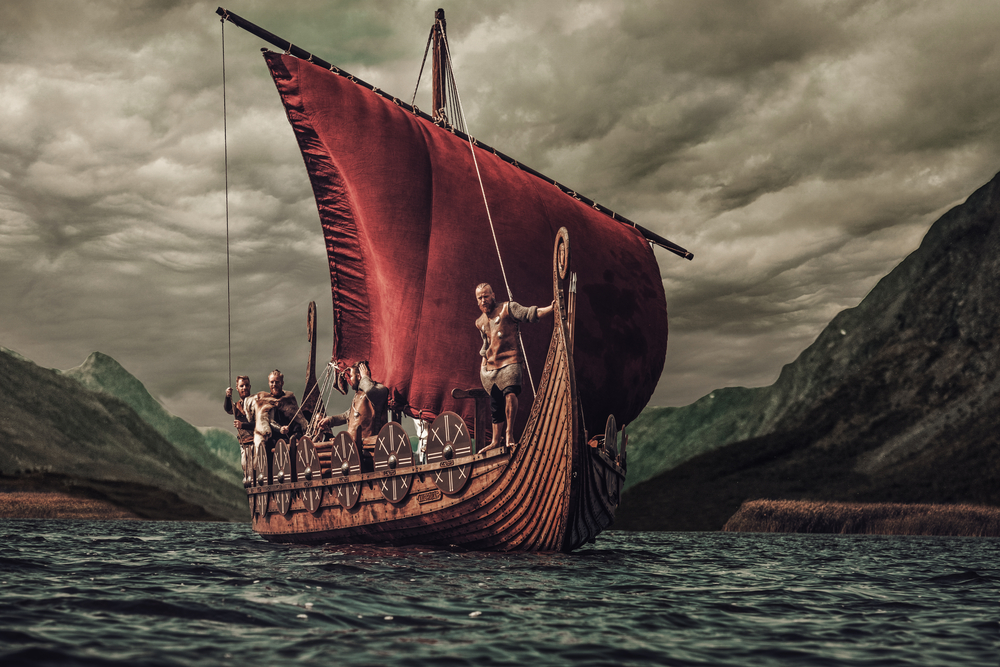
WWW.DISCOVERMAGAZINE.COM
How Viking and Germanic DNA Spread Through the Iron Age Migrations
Back in the first millennium A.D., waves of human migration across Europe created an elaborate genetic puzzle that researchers have now started to unravel with a leap in DNA analysis. An enhanced look at the movement of populations during the time of the Roman Empire and the Vikings has illustrated the genetic impact of this consequential era of history.New research led by the Francis Crick Institute and published in Nature centers around a data analysis method known as Twigstats, which focuses on assessing genetic family trees. This allowed for a plethora of unprecedented discoveries on historic Iron Age migrations in Europe from the years 1 to 1000. Using Twigstats, the researchers dissected the differences between genetically similar groups in a more precise way than ever before.Southward Migration of Germanic PeoplesThe researchers examined over 1500 European genomes from people who lived during the first millennium, an eventful period in European history. These years marked the dramatic rise and fall of the Roman Empire, the dawn of the Vikings, and the migration of several Germanic groups throughout the continent.The origins of Germanic peoples is somewhat nebulous the word Germanic is an umbrella term used to describe a multitude of tribes that spoke related Germanic languages. Theyre thought to have originated somewhere around the modern day regions of Northern Germany, Denmark, and Southern Sweden.The new research, however, illuminated the departure of groups that migrated from Northern Germany or Scandinavia to Central and Southern Europe. Alliances of Germanic tribes famously fought back against the Roman Empire as it attempted to expand its borders around the beginning of the millennium. The earliest information on Germanic peoples and their culture was recorded in Roman accounts a notable example could be Germania, a book written around 98 A.D. by Roman historian Tacitus.Researchers bolstered this historical knowledge with genetic evidence, finding ancestry from the Germanic groups that spread south in people who lived in southern Germany, Italy, Poland, Slovakia, and southern Britain. In one case, they found that a person in southern Europe that carried 100 percent Scandinavian-like ancestry.The genetic study showed that the migrating Germanic peoples mixed with pre-existing populations. Their migration routes appeared to match with the three major branches of Germanic languages that would eventually develop: West Germanic (English, German, and Dutch), North Germanic (Danish, Swedish, Norwegian, Swedish, Icelandic, and Faroese), and East Germanic (a now extinct language family).Migration Back to ScandinaviaThe researchers uncovered one person possibly a Roman soldier or slave gladiator living in Britain around 100 A.D. to 300 A.D. who had 25 percent Scandinavian ancestry. This insinuates that people of Scandinavian ancestry were in Britain before the Anglo-Saxon period (around 400 A.D. to 1,000 A.D.) and Viking period (around 800 A.D. to 1,000 A.D.).Genetic analysis explored another wave of migration toward the end of the Iron Age in Scandinavia, which ended about 800 A.D., coinciding with the rise of Vikings. This time, though, it was people from Central Europe moving back up north into Scandinavia.Evidence suggests this was not just a one-time migration event, but a continuous shift in ancestry. Researchers landed on this idea thanks to biomolecular analysis of teeth from people buried in the island of land, Sweden, who carried ancestry from Central Europe, but grew up locally.More evidence is needed to determine the reasons for migrations around Scandinavia at this time, but researchers say repeated conflicts and unrest may have played a large role in spurring the movement of people.The Vast Range of Viking AncestryVikings are known for their marauding campaigns across parts of Europe, made possible by their shipbuilding capabilities that allowed raid parties to reach the British Isles and other areas by sea.The extent of their raids had a resounding genetic impact throughout much of Europe, as researchers found that many people outside of Scandinavia during the Viking Age had a mix of local and Scandinavian ancestry.This could be seen near the eastern limits of Europe, where researchers identified ancestry from Sweden in Viking Age individuals who lived in what is now Ukraine and Russia.On the opposite side of Europe, they similarly identified ancestry from Denmark in individuals living in Britain during the height of the Viking era. In Britain, remains of deceased men buried in Viking Age mass graves also showed Scandinavian ancestry, demonstrating the spread of Viking genetics in the region.The genetic discoveries from Twigstats have undeniably helped round out the story of Iron Age migrations from Germanic peoples to Vikings, but they will also pave the way for future studies on historic ancestry, as more ancient genome sequences need to be studied according to researchers.Article SourcesOur writers at Discovermagazine.com use peer-reviewed studies and high-quality sources for our articles, and our editors review for scientific accuracy and editorial standards. Review the sources used below for this article:Britannica. Germanic peoplesBritannica. Germanic languagesJORVIK Viking Centre. Where did the Vikings come from?Jack Knudson is an assistant editor at Discover with a strong interest in environmental science and history. Before joining Discover in 2023, he studied journalism at the Scripps College of Communication at Ohio University and previously interned at Recycling Today magazine.
0 Comments
0 Shares
139 Views


